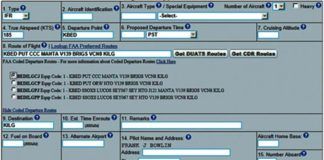Always pay attention. Good advice, that, applying equally to all human endeavors. But it especially applies to those of us who pilot aircraft.
I’ve often stressed the traps and dangers of becoming too reliant on automation. “Don’t let it become a crutch,” I’ve preached. Consequently, you’d think, as I did, that I’d be particularly wary of that malady. Yes, you’d think…
I was recently on a westbound trip to California where we encountered a large area of schmutz extending from the tops of the Sierras to above where I wanted to fly. Given that the temperature was about -7 C, that segment of the flight was ripe for icing, so I wasn’t surprised.
Light-to-moderate rime is what I told ATC. My airplane is approved for flight in ice, so I took this mostly in stride. However, I do treat that equipment as a means to get out of ice, not fly through it for long periods. Of course, we were on the autopilot so I was free to divert my attention to the ice. I asked about the tops to confirm climbing wasn’t an option. So, I asked for lower, which wasn’t yet available due to terrain. I was between the rocks and the ice tops, so I just slogged on.
Meanwhile, of course, I turned on the pitot heat, the windshield hot plate, the props, and started cycling the boots. The boots on my airplane don’t cycle continuously when turned on; you get one full cycle per switch activation, so I was activating the switch a lot.
Surprisingly, and unlike all my previous ice encounters, the boots didn’t pop off all of the ice. There was a ridge building right on the leading edge. It stuck out about an inch. Had the boots failed? No, I watched them inflate normally. I guess that ice was just more tenacious than normal. Plus, the precip didn’t help. (See the photo on page 15.)
Then, I saw it. I’d been so focused on the ice that I forgot Rule #1: Fly the airplane! Just assuming George would keep on truckin’, I’d fallen into that automation trap, assuming someone (okay, something) else was flying for me. It was, but the bottom fell out of my stomach as I noticed that we’d lost 40 knots and were getting perilously close to stall speed.
“Oh, guano,” I exclaimed, to which my wife, also a pilot, merely responded, “Handle it.” I was gratified by her confidence but a bit taken aback by her apparent lack of concern. Perhaps ignorance is bliss, or perhaps she just was comfortable that I would, indeed, handle it.
We were still flying, maintaining altitude, so I took a moment for analysis. We were pitched up about 10 degrees, compared to a couple degrees at normal cruise. I punched off the autopilot and felt the controls—fine, if a bit sluggish. I was thinking that we couldn’t possibly have enough ice to slow us that much.
Duh! I finally realized that it was the combo of ice increasing drag, falling precip with its slight downward current and the biggie, mountain wave. We were in a significant descending air mass. I pushed power, props and mixture full forward and we immediately picked up speed—fixing it just as we got out of it. I reported the area to ATC.
What’s the moral of this little vignette? I was so confident in my ability not to become too confident in the automation, that I’d gotten too confident in the automation. Sure, other than flying the airplane, I was doing everything else right, but it’s that lack of attention to the most immediate task at hand that, gone undetected, probably would have killed us. Yes, it can happen to me, and to you, too.
Always pay attention!




